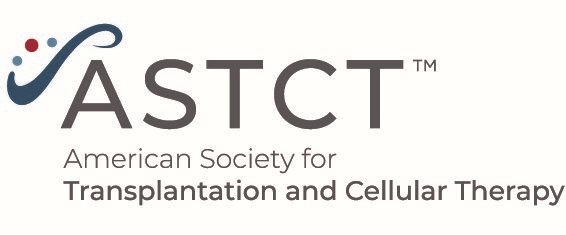
TECing a Closer Look at Teclistamab with Dr. Saad Usmani

This article was written for and by CancerNetwork partner, the American Society for Transplantation and Cellular Therapy.
When it comes to targeting B-cell maturation antigen (BCMA) on multiple myeloma cells in 2022, there is no silver bullet. BCMA-directed chimeric antigen receptor T-cell (CAR-T) therapies like idecabtagene vicleucel (ide-cel) and ciltacabtagene autoleucel (cilta-cel) offer the potential for durable responses after one-time infusions, but manufacturing failures and long vein-to-vein times have starkly limited their accessibility for most of our patients. Belantamab mafodotin, an antibody-drug conjugate that targets BCMA, has more modest single-agent activity and comes with a significant risk of ocular toxicities.
Bispecific antibodies (bsAbs), which simultaneously target both BCMA on myeloma cells and CD3 on native T cells, may offer the best of both worlds: “off-the-shelf” infusions without lengthy manufacturing periods but with response rates approaching those of CAR-T therapy. Perhaps the most well-known bsAb in malignant hematology is blinatumomab, a CD19-targeting bsAb (known by its proprietary class name, a Bispecific T-cell Engager or BiTE), for B-cell acute lymphoblastic leukemia. However, there are almost a dozen bsAbs that have been developed – some no longer under investigation – to target BCMA in myeloma as well.
Perhaps the bsAb that is closest to the finish line in terms of FDA approval is teclistamab, which demonstrated a 63% overall response rate and median progression-free survival (PFS) of 11.3 months in the recently published MajesTEC-1 trial.1 However, the finish line for regulatory approval will only be the starting line for making teclistamab available to real-world patients. We spoke with Dr. Saad Usmani of Memorial Sloan Kettering Cancer Center, who was senior author on the MajesTEC-1 trial, about the road ahead for teclistamab after FDA approval. (Responses edited for clarity and comprehensiveness of answers):
Let’s start broadly with a question about bsAbs like teclistamab versus CAR-T therapies. One of the traditional arguments for CAR-T is that it’s a one-time infusion as opposed to indefinite clinic-based infusions. How does “one and done” CAR-T compete with, for the lack of a better phrase, “this is tec’ing forever”?
Dr. Usmani: We are still learning about the optimal sequencing of CAR-T versus bsAbs, and there is room for both modalities in managing our patients. This is particularly true given the long waitlists for commercial CAR-T therapies currently. That being said, we do need to explore fixed-duration therapy with bsAbs in selected patients. For example, in MajesTEC-1, the median time to best response was 3.8 months; over a quarter of patients achieved measurable residual disease (MRD) negativity at a threshold of 10-5. For patients who achieve sustained MRD negativity at 6 or 12 months after teclistamab therapy, outcomes with treatment discontinuation should be investigated.
Great point. I’ve already seen one patient who received a bsAb on trial, stopped the bsAb when the trial ended, and remains in remission off treatment years later. If other bsAbs end up offering similar MRD negativity rates or PFS results to teclistamab, how will you or other myeloma doctors choose between therapies?
Dr. Usmani: Teclistamab will almost certainly be the first bsAb to gain regulatory approval in the US. As you know, it recently obtained marketing authorization in Europe a few weeks ago. Given the paucity of therapy options to our patients with relapsed/refractory disease right now, including BCMA CAR-T, we’ll undoubtedly prescribe teclistamab quite a bit once it’s available. However, there are several other bsAbs making their way through trials. All else being equal in terms of efficacy and safety, the route of administration (subcutaneous versus intravenous) and dosing frequency (weekly versus every few weeks) will be big distinguishing features between bsAbs. Rates of cytokine release syndrome (CRS) and immune effector cell-associated neurotoxicity syndrome (ICANS) will also be important to compare between products.
Agreed. One of the strengths of bsAbs compared to CAR-T therapy is a generally lower rate of ICANS. Theoretically this makes bsAbs more practical to be administered at centers with less expertise in immune effector cell therapies. Once teclistamab is approved, what do you think it will take for it to be practically available to patients being treated in the community oncology setting?
Dr. Usmani: This will require close partnerships between community practices and academic centers early on, both in terms of patient selection for bsAb therapy and also in terms of managing CRS and ICANS. There will definitely be a steep learning curve for tocilizumab and corticosteroids, but in the long run I do envision bsAbs being given much more frequently in the community setting.
Beyond CRS and ICANS, one of the other big bsAb toxicities we’ll have to educate everyone about (ourselves included!) is the risk of infections – particularly in the era of COVID-19. This topic came up several times at our most recent International Myeloma Society meeting last month, for example. I’ll close with a practical question – what will you use for infectious prophylaxis once teclistamab becomes available?
Dr. Usmani: I would favor varicella zoster virus (VZV) prophylaxis for all patients as well as intravenous immunoglobulin (IVIG) for those with hypogammaglobulinemia. IgG levels will need to be checked periodically, perhaps with each cycle to start. Anti-bacterial and anti-fungal prophylaxis can be considered on a case-by-case basis with close attention to prior infection history, co-morbidities such as diabetes, etc.
This is very helpful. Thank you for your time, Saad!
Dr. Usmani: Thank you, Rahul.
References
- Moreau P, Garfall AL, van de Donk NWCJ, et al. Teclistamab in Relapsed or Refractory Multiple Myeloma. N Engl J Med. 2022;387(6):495-505. doi:10.1056/NEJMoa2203478
- Janssen Marks First Approval Worldwide for Tecvayli (teclistamab) with EC Authorisation of First-in-Class Bispecific Antibody for the Treatment of Patients with Multiple Myeloma. News release. The Janssen Pharmaceutical Companies of Johnson & Johnson. Published August 24, 2022. Accessed October 13, 2022. https://bit.ly/3TkHD7U
Newsletter
Stay up to date on recent advances in the multidisciplinary approach to cancer.
















































































